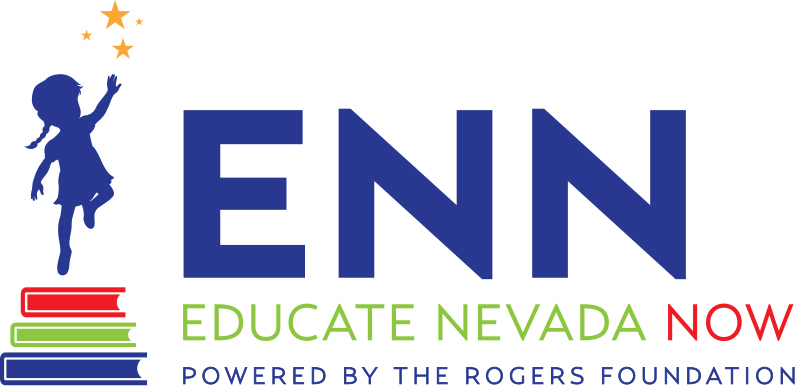Weighted school funding formula is back, in a less expensive, revamped form
This story first appeared in The Nevada Independent on March 17, 2017. Read the original version here.
Lawmakers are finalizing a plan to implement a much-anticipated “weighted” school funding formula this session, albeit on a more shoestring budget than their original $1.1 billion proposal.
Assembly and Senate education committees are set to meet jointly on Wednesday afternoon to discuss an amended version of SB178, which sets up a funding scheme that allocates extra money to students with extra needs such as English learners or children in poverty. The price tag on the original bill was prohibitively expensive; the final cost of the new, scaled-back version — which has buy-in from leaders on both sides of the aisle — has yet to be determined and will hinge on how much money lawmakers leave for it after they finalize other budgets.
“We want to basically focus on the lowest-achieving kids and put the priority there so that we can really move the needle on education,” said Democratic Sen. Mo Denis, the bill’s sponsor. “You’re going to see a bridge that gets us from where we are now into where we need to get to on an actual funding formula in the future.”
Lawmakers expect to access at least the $72 million that Gov. Brian Sandoval budgeted to expand the Zoom and Victory school programs that target schools with high populations of at-risk students. Sandoval has also said he hopes as much of the nearly $96 million in additional revenue the state expects over the next two years will go to the weights.
The original bill laid out “multipliers” that would apply to the base level of per-pupil funding and apply extra money to all students who fell into certain categories (special education, gifted and talented, English learner and low-income). The new concept would narrow the pool by selecting the lowest-performing 25 percent of students, and prioritizing the English learners and free and reduced-priced lunch participants among them. The pool is about 50,000 students, according to Clark County Education Association Executive Director John Vellardita.
The first objective will be to settle on a dollar figure that’s enough to fund a meaningful intervention for a child. Vellardita estimates that it would be about $800 to $1,000 a year.
“The most important value first is — will that amount, that unit value, that flat value that goes to the kid, be enough to buy a service that can correlate to good outcomes,” he said. “That’s the critical decision.”
The next step will be determining how many children can be served at that rate. Proponents are targeting all of the estimated 50,000 children who are in the bottom quartile of academic performance, but the money may not stretch that far.
A working group directed by Denis had been trying to hammer out details including how “prescriptive” the bill should be about how the extra money is used. Education officials plan to provide a menu of potential interventions that have been effective in Zoom and Victory schools — such as reading centers, “wraparound” services such as food and health care access or an extended school year.
The challenge will be that unlike in programs such as Zoom Schools, where a chunk of money goes to a school with a high density of English learners and all students receive the benefits, some schools will have a much lower number of students receiving the extra money. That might not be enough to help a single school run its own reading center, for example.
“Somewhere between zero and 50 students, it becomes challenging to dictate what they can and can’t do because you don’t have enough funds to do a reading center, for example,” said state Superintendent Steve Canavero. “So I think that’s where we need to leverage other evidence-based programs and more targeted supports for kids.”
The new proposal also differs from the original bill because it starts breaking out a new category of students in need of extra resources: those who are underperforming academically, even if they aren’t poor or learning English. That category wasn’t part of a legislative study a few years ago that recommended weights.
“This is a new discussion that we’re having here. We didn’t talk about that before,” Vellardita said. “We just assumed because you’re an ELL (English language learner) student or you’re a free and reduced student, that you’re at-risk. The data doesn’t show that. There are some kids who are ELL who are highly proficient, but they do need some ELL intervention.”
The reshaped proposal appears to have support from leaders in both parties and education advocacy groups including Educate Nevada Now, which which focuses on equity issues. That group, and others proponents including Denis, want to ensure that the existing Zoom and Victory programs remain untouched while the state presses forward with a new model.
“Hopefully that will help the district continue the systemic change they need to maintain for us to get out of No. 50,” said Sylvia Lazos of Educate Nevada Now.
While education advocates have come to terms that they won’t be able to afford a full-blown weighted funding formula this session, they’re anxious to get something going to capture children who aren’t getting served under programs such as Zoom, which was created in 2013.
“We’ve had four years of Zoom,” Vellardita said. “We now have almost a whole generation of kids who would’ve been eligible to receive those services that didn’t, who are now leaving the primary and going into secondary. They’re further behind. We didn’t want to see, if at all possible, a continuation of that.”
